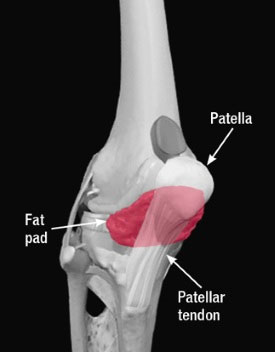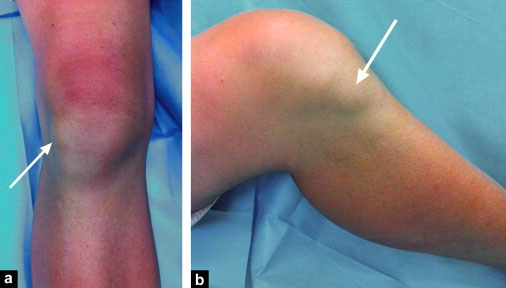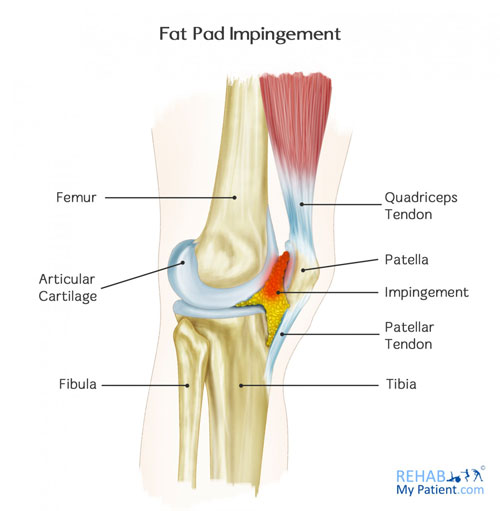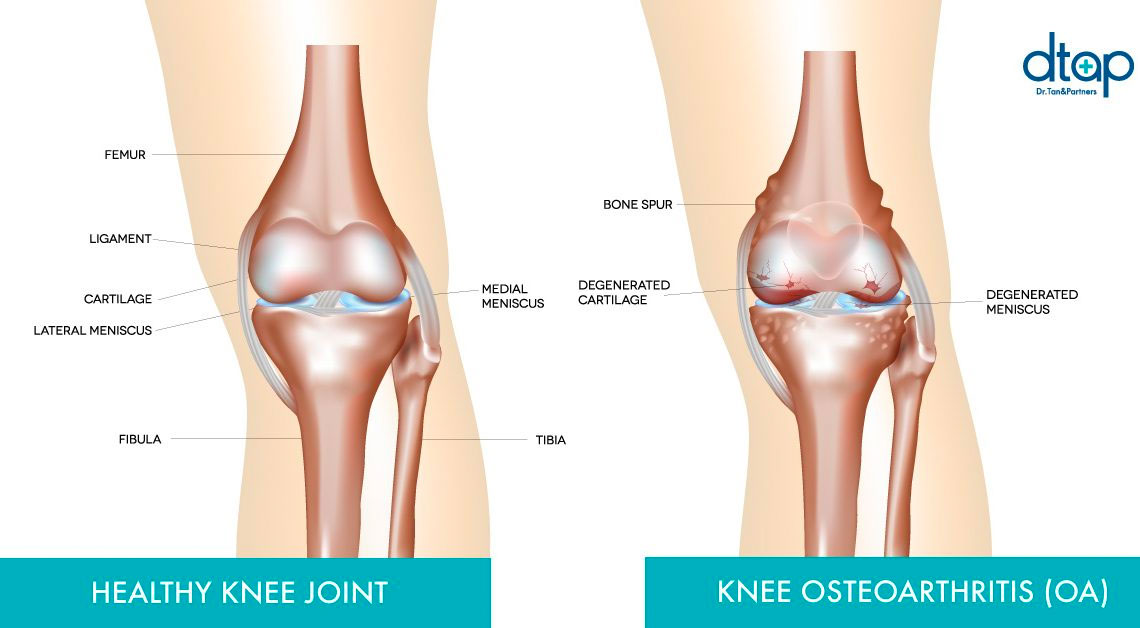
Hoffa’s Fat Pad Syndrome
Fat pads are collections of closely packed fat cells encapsulated by a layer of fibrous tissue. They can be found throughout the body and, depending on location, can serve many different purposes. However, as fat pads have a rich blood and nerve supply they are also quite vulnerable to injury and pain.
In particular, this blog is about Hoffa’s Fat Pad syndrome – a common cause of knee pain. This is when there is inflammation and scarring of the fat pad located under the knee-cap, also called the infrapatellar fat pad. This condition can exists in isolated but may also co-exists with other knee pathologies, including: meniscal injuries, patella fractures or dislocations.

Inflammation of the infrapatella fat pad may be triggered by:
- A fall or hyper-extension injury,
- A direct blow or trauma to the fat pad or knee, and
- After knee surgeries.
However in sport, Hoffa’s Fat Pad Syndrome commonly arises from overuse and repeated trauma.

Symptoms of Hoffa’s Fat Pad Syndrome
People with Fat Pad Syndrome usually describe a burning or aching pain at the front of the knee, under or to the sides of the patella tendon. Activities which include straightening movements of the knee will aggravate pain, such as climbing stairs, walking or prolonged standing. People may also experience the knee “locking” when straightening.
Fat Pad and Knee Osteoarthritis
The Infrapatella fat pad performs two main roles to sustain the overall health of the knee. As such, when people develop Hoffa’s Fat Pad Syndrome, the risk of developing osteoarthritis later in life significantly increases.

The fat pad’s main functions include:
1. Maintaining good biomechanics in knee movement:
The infrapatellar fat pad is a super flexible structure – able to change its shape and position as the knee moves throughout range. This allows the fat pad to optimise joint and tendon alignment for activation of the quadriceps muscle at all degrees of bending. Therefore, if the fat pad becomes inflamed and consequently scarred, it increased in volume and becomes more fixed in place.
2. Storing reparative cells for when injury occurs in the knee:
Recently, research has found that the infrapatellar fat pad is also a key reservoir of reparative cells. As such, when we sustain an acute injury to the knee, the fat pad transports cells around knee to help modulate inflammation and facilitate good healing of the knee structures. If the fat pad itself becomes injured it is no longer able to perform this function.

Reference
Dragoo JL, Johnson C, McConnell J. Evaluation and treatment of disorders of the infrapatellar fat pad. Sports Med. 2012 Jan 1;42(1):51-67. doi: 10.2165/11595680-000000000-00000. Review. PubMed PMID: 22149697.